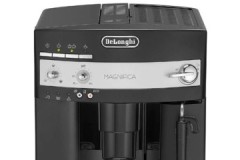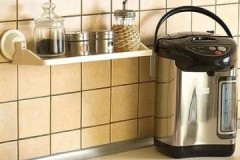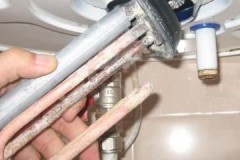Helpful tips on how and how to descale your coffee machine
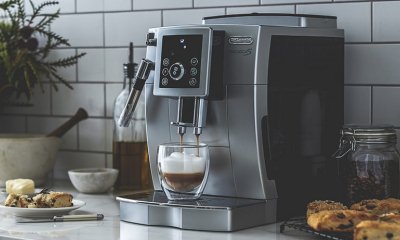 Like any appliance with a heating element, the coffee machine is susceptible to lime deposits and needs to be cleaned periodically.
Like any appliance with a heating element, the coffee machine is susceptible to lime deposits and needs to be cleaned periodically.
The resulting scale reduces the quality of the device and can lead to damage to expensive equipment.
We will tell you about how and what can be used to descale a coffee machine in the article.
Content
Cleaning frequency
On average, the need for cleaning occurs after the machine has made about 200 coffees or once every 1-3 months, taking into account the frequency of the appliance and the hardness of the water used to prepare coffee.
The following factors may also indicate the need to remove deposits:
 there is a whitish precipitate in the prepared drink;
there is a whitish precipitate in the prepared drink;- during operation, the device emits an uncharacteristic hum;
- there is a drop in steam pressure;
- long-term whipping of milk foam and its weak splendor;
- the coffee trickle is thinner than before.
If there are warning signs of lime scale, it is advisable to clean it immediately.
What are the consequences if not cleaning?
If the descaling is not carried out within the specified time, the parts may be damaged by corrosion.
The drinks themselves, created by the coffee machine, begin to lose their taste.... In this case, the drink not only acquires an unpleasant aftertaste, but can also be harmful to health. This is due to the fact that limescale deposits create a favorable environment for the development of pathogens.
At the same time, the thermal conductivity of the heating element deteriorates, the nodes begin to malfunction, and their functionality is disrupted. As a result, the coffee machine itself starts to work worse, and the drink becomes less and less tasty. Over time, the device will require expensive repairs.
How to solve the problem at home?
Special decalcification products help to cope with scale. In addition to purchased preparations, cleaning with citric acid also shows good efficiency.But with other home remedies, like vinegar, it's best not to experiment.
Self-cleaning machines
For "smart devices" that themselves let the user know that it is time to clean, the following work should be done:
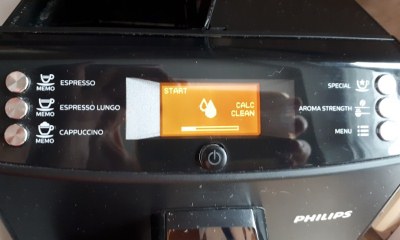 A solution is being prepared (strictly according to the instructions for the selected product).
A solution is being prepared (strictly according to the instructions for the selected product).- The prepared liquid is poured into the reservoir for water.
- The waste container is emptied and coffee residues are removed.
- The automatic cleaning cycle starts. In this case, all the prompts of the device itself should be followed (for example, clean the sump, add water, etc.).
You should not interfere with the operation of the device on your own during the self-cleaning period.
Treatment of the unit with a solution
Appliances that have a simpler device and are not equipped with a self-cleaning function are treated as follows:
- Prepare a cleaning solution according to the instructions (each purchased product has its own instructions).
- Pour it into a container on the body of the unit, designed for water.
- Clean the filter from coffee residues as well as the waste container.
- Turn on the coffee machine.
- Open the tap to drain about ½ cup of liquid.
- The process is repeated up to 5 times in total, with pauses between them for 5 minutes.
- For appliances that do not have a pulver, add coffee and start the brewing cycle. This should be done with the cleaning agent before draining it.
- In a pulverized espresso machine, a cycle is started without adding coffee.
- Drain off all liquid.
- Wash the water tank.
- Pour clean water into it.
- Start the cycle.
- Flush the working unit.
With the help of special tablets
The tablet form of the cleaning agent is intended for coffee machines with a container for their placement. General procedure:
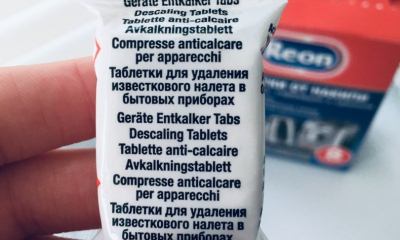 find where to start brewing according to the "ground coffee" program;
find where to start brewing according to the "ground coffee" program;- activate this mode;
- put 1-2 tablets into the ground coffee mine (the quantity is specified according to the instructions);
- install a large container directly under the dispenser;
- start the cooking process by selecting the maximum cooking volume;
- drain the liquid;
- carry out 2 cycles of preparation of a coffee drink in the "ground coffee" mode, but do not add coffee itself;
- after such treatment, the water must be drained.
Features of processing with tablets may differ for different models of coffee machines.
Can citric acid be used?
For decalcification, ordinary citric acid can be used. It is a food product that, when it reacts with limescale deposits, causes delamination and removal of limescale deposits.
Cleaning procedure:
- Remove waste. Rinse removable elements with water.
- Separately prepare a solution of 8 teaspoons of citric acid for each liter of water.
- Stir until the acid grains dissolve.
- Pour the resulting solution into the water tank.
- Leave to stand for several hours.
- After at least 2 hours, start the coffee brewing cycle. Whether to add coffee for this or not depends, as with cleaning with professional products, on the type of coffee machine.
- Drain the liquid.
- Flush the reservoir.
The cleaning liquid from coffee is not used for food.
How to descale a coffee machine with citric acid, the video will tell you:
Top 5 best special products
Professional special products are aimed directly at cleaning coffee machines. All of them are divided into 2 main groups:
- tablets;
- liquid.
Each species has its own characteristics:
| Descaler type | Main action | Advantages | disadvantages |
| Liquid | Removing coffee oil and decalcifying | good dissolution, simplicity and ease of pouring | it may be difficult to measure the required amount of the drug, there is a possibility of cost overruns |
| Tablets | Removing coffee oil and decalcifying | control of the consumption of funds, ease of use, there is no need to adjust the dose | it takes time for complete dissolution, in some cases, particles of the drug that are not dissolved in water may remain |
It is better to give preference to products of well-known manufacturers.
Topper
The drug is available in liquid form in containers with a volume of 0.25 liters. The cost per package is from 220 rubles.
The product is based on sulfamic acid, which allows cleaning not only efficiently, but also gently. The consumption of the product is economical: 100 ml is enough for 2 liters of water.
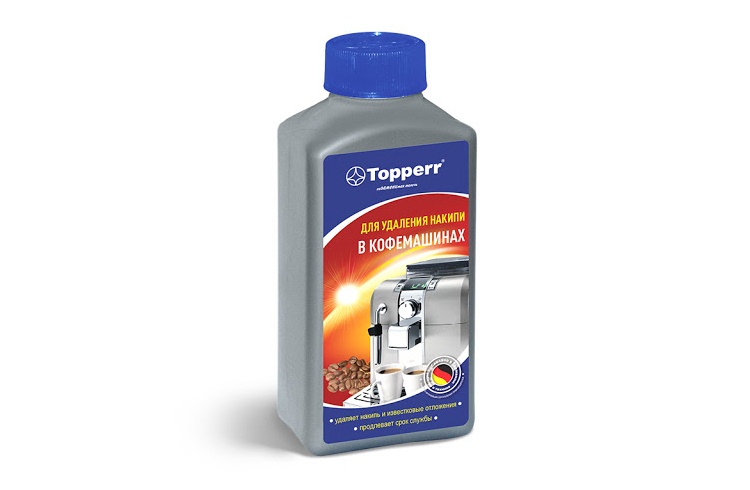
Bosch set
The Bosch company organized the release of products that include liquid (0.5 liters) and tablets (10 pcs.). Price - from 1,000 rubles.
The product is suitable for use in coffee machines, coffee machines, kettles.
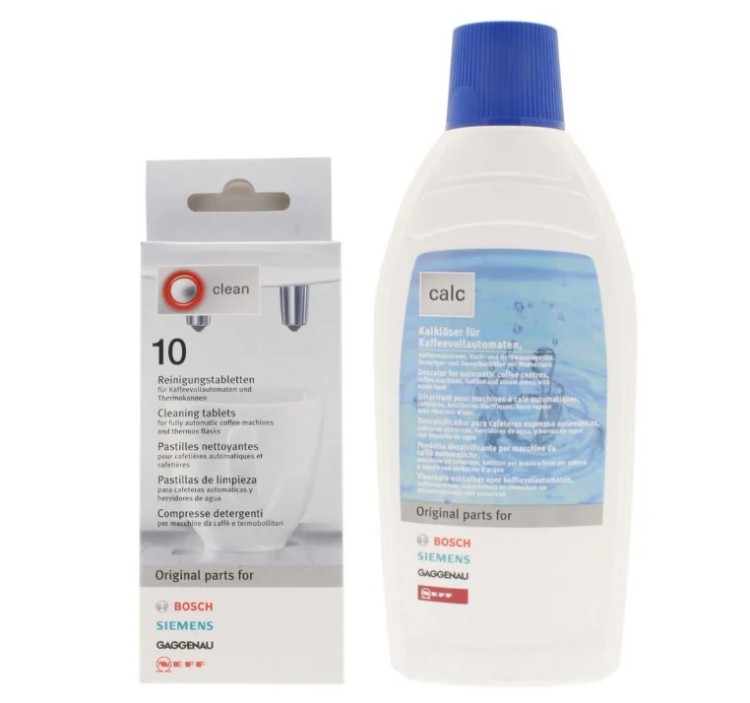
Top House Cleaner
The drug is produced in Germany in the form of a liquid in containers with a volume of 0.25 liters... The cleaner is intended for descaling the elements of coffee machines. It contains a corrosion inhibitor and organic acid. The average cost per pack is from 220 rubles.
Good removal result:
- scale;
- traces of milk;
- leftover coffee;
- unpleasant odors.
The Top House product also contains special protective components. They prevent the formation of corrosion and prevent new dirt from appearing.
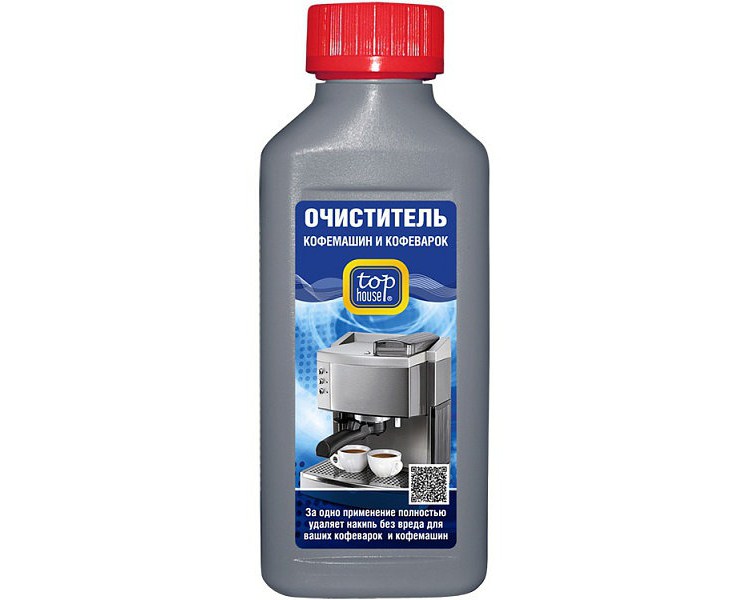
Decalcifier from Saeco
This tool is recommended by experts as a very effective... The main direction of the purifier is decalcification. A 0.25 liter bottle costs from 750 rubles.
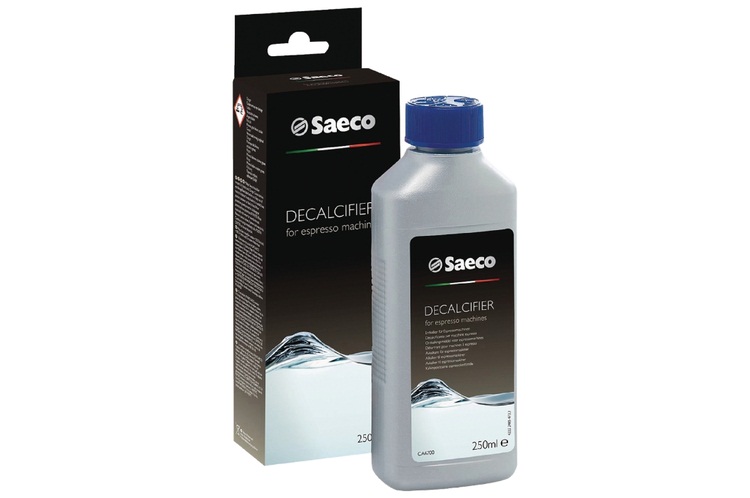
Bosch pills
The product is a tablet with a complex effect: protection against corrosive processes plus descaling. Designed for descaling coffee machines, including built-in ones. The price for 3 tablets is from 800 rubles.
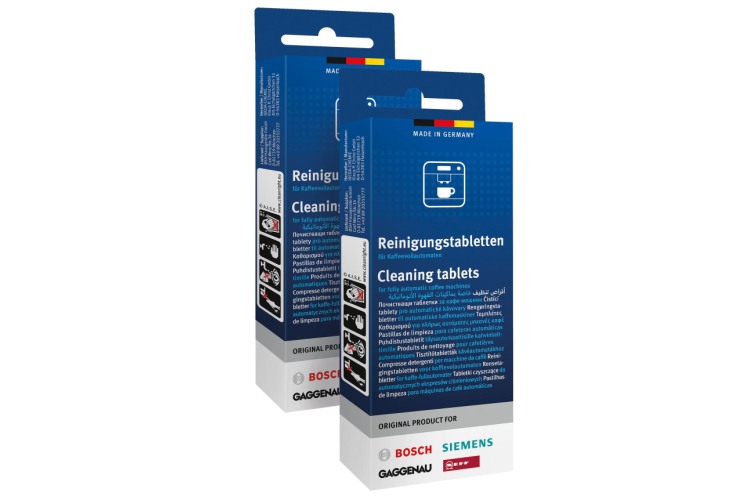
The nuances of cleaning individual elements
During the operation of the coffee machine, care will be needed for all nodes involved in the creation of a noble drink:
- the boiler requires protection against scale, which forms when water is heated;
- cappuccinatore - from milk residues, etc.
Cappuccinatore
The weak point of the cappuccino maker is the outlet tube. This element can become clogged, for example, due to the use of stale milk or frequent use. Such a blockage is removed by cleaning in a standard way using special means.
If cappuccino is one of the frequently brewed drinks, then clean the cappuccino maker 2 times a month.... Special products used for this work well both with milk fat and other contaminants.
If the contamination is old, then the unit can be disassembled, and the parts can be washed in a weak soda solution (1 tablespoon of powder for 1 liter of warm water). Alternatively, use a dishwasher to clean the assembly.
Millstones
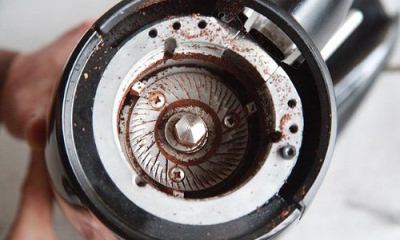 During the preparation of coffee, coffee fat is released... The oily substance can clog the millstones by combining with fine particles of coffee dust.
During the preparation of coffee, coffee fat is released... The oily substance can clog the millstones by combining with fine particles of coffee dust.
As a result, the mechanism itself suffers and the quality of grinding of the grains decreases. This situation can also occur if moisture gets into the bean compartment.
Cleaning with low grinding quality is carried out by disassembling the unit and machining the millstones.
Infuser
The approach to cleaning the brewing unit depends on the design of the coffee machine. Removable is easy to rinse - just clean it in water... It is advisable to do this once every 7-20 days. After drying, return to the right place.
Capsule and carob coffee machines differ in the organization of the brewing unit. It can be a cone or a capsule. The holder allows you to form the so-called "coffee pill".The material of its manufacture is most often brass.
Recommendations
Professional advice will help you clean in the best possible way and avoid complications:
- Neglect of the rules of care not only impairs the operation of the device, but also harms health, since pathological microorganisms begin to develop in a favorable environment.
 During the operation of the coffee machine, preference should be given to high-quality consumables - purified water, dry coffee, etc.
During the operation of the coffee machine, preference should be given to high-quality consumables - purified water, dry coffee, etc.- Regular filter replacement is essential. For those made of paper - after each use. Nylon ones last up to a couple of months of regular use.
Non-replaceable, designed for long-term operation, are titanium and other filters with a special coating.
- Some homemade descaling recipes can damage the coffee machine, so it is better not to use unverified products as an experiment.
- Almost all special tools can handle limescale in a coffee machine in one application.
- You can buy a descaler at coffee machine points of sale, in household chemistry departments, or order in an online store.
- The rate of scale formation is directly affected by the quality of the poured water. It will be better for the device itself and for health if only cleaned is used.
- Some models of coffee machines have a built-in water filter. But even in this case, the unit will need cleaning at least once a year. Even if the indicator responsible for the notification of the need for cleaning does not give a signal.
He will tell you about the methods and methods of descaling in household appliances this section.
Conclusion
Proper care of your coffee machine must include regular descaling. This will allow the device to work efficiently, for a long time and without breakdowns. Limescale is one of the most common causes of coffee machine breakdowns. Preventing it from forming is the primary task of the owners of coffee machines.

